The street art that could add thousands to the value of your home – even if you just live nearby
A street artist leaving his mark on the walls of your house could end up netting you a small fortune. Nicola Venning explains.
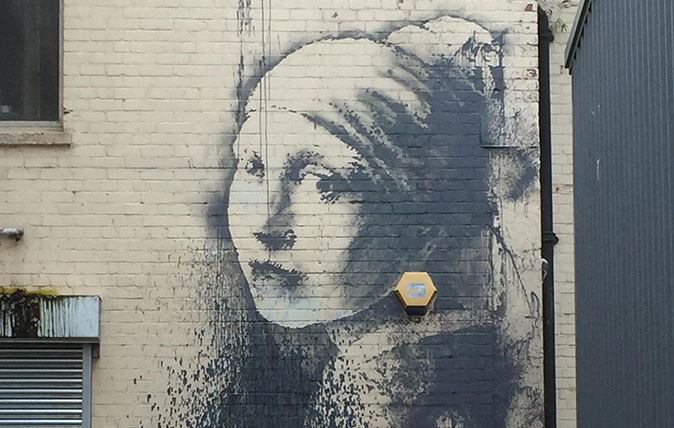

Forget organic delis, yoga studios, coffee shops and pony-tailed baristas. If you’re looking to buy a home in a hip-and-happening, up-and-coming area, seek out street art.
The vibrant face of alternative culture, it’s a fun art form that’s often politically aware and ‘tags an area in the minds of a generation that wants to
be where the action is,’ says Henry Pryor, a London-based buying agent and property commentator.
In 2012, when a Georgian building opposite St Pancras became host to the capital’s largest mural – the eye-catching Megaro Project by Agents of Change – it helped put the refurbished station and regenerating area on the cultural map. Equally, Waterloo’s Graffiti Tunnel, a brick canvas of colour in Leake Street, near the South Bank, reinforced the area’s Arts credentials.
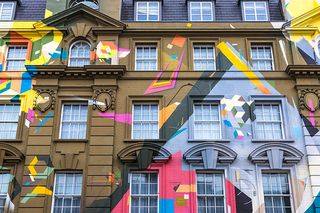
In two of the most dynamic areas in London, these artworks created a demand for homes. As Mr Pryor puts it, their presence ‘drives a vibe and, with it, [house] prices’. According to research by the Affordable Art Fair, homeowners are willing to pay £8,549 extra for a house in an area that has colourful street art, with 80% of Britons agreeing that eye-catching murals contribute to a positive community atmosphere.
A predominantly urban phenomenon, street art ranges from the picturesque to the witty and subversive. Unlike graffiti, it often makes a wry statement about society. Many artists, such as Londoner Remi Rough, influential Parisian Blek le Rat and, of course, Bristol-born Banksy, have achieved considerable renown. Banksy’s works sell for hundreds of thousands of pounds.
Although this guerrilla artform has been around for a while, we all knew it had finally ‘arrived’ when Tate Modern ran an exhibition of international street artists on its river façade in 2008. These days, no self-respecting city with cultural clout is without its colourful corners.
Sign up for the Country Life Newsletter
Exquisite houses, the beauty of Nature, and how to get the most from your life, straight to your inbox.
Bristol’s Harbourside, once an area of rundown docks, is now home to Brunel’s SS Great Britain, museums and the Watershed media centre. A district of chic city flats, restaurants and cafes, it buzzes with activity. In 2014, Banksy painted his Girl with a Pierced Eardrum (pictured top), a riff on Vermeer’s Girl with a Pearl Earring, on the side of a building in Albion Docks. At the stroke of a brush (or spray of a can), the area, once simply trendy, became super-cool.
‘Many buyers would be thrilled to have a Banksy in their locality,’ says David Wild, director of Savills Clifton, in Bristol.
‘He brings intrigue and his work has a style that makes people smile.’
Apartments in nearby Brandon Yard, a new waterside development on the market with Savills, go for £315,000 for a one-bedroom flat up to £645,000 for two bedrooms.
It’s a similar story in central Bristol. Banksy’s comical Well-Hung Lover, on Frogmore Street, adorns an up-and-coming part of the city centre. It’s also opposite Bristol Cathedral and the lovely College Green.
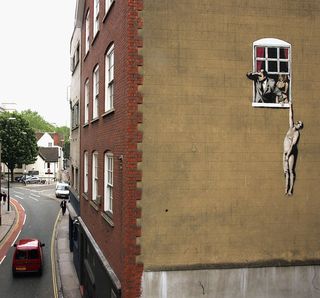
The area is replete with honey-coloured Georgian and Victorian mansions and agents Richard Harding are currently marketing a five-bedroom Grade II-listed town house near the mural. Set within a colonnade of similar early-19th-century houses, it has 4,800sq ft, a 76ft garden and its own driveway.
However, this modern artform is not restricted to city streets. Meander along the River Lim in chocolate-box-pretty Lyme Regis, Dorset, and you’ll find a striking stencil of an origami crane catching goldfish.
On a building by the water’s edge, the Banksy piece looks more at home than the ducks. Three-bedroom cottages in the old town start from about £350,000; four-bedroom detached homes can reach £750,000.
Such is the status of street art that ‘we are now seeing architects making space for bespoke alfresco artworks and either commissioning one-off works or giving space to rotate works,’ says Mr Pryor. In other words, street art gets pride of place, particularly if it’s a Banksy.
The Graffiti Painter, Banksy’s take-off of a Velázquez-like painter working on the street artist’s tag, was already under protective glass when Enstar Capital property developer took over a building near Portobello Road in London’s Notting Hill. It plans to move the stencil, said to be worth more than £2 million, to the first floor and illuminate it.
Terraced homes in the area sell for upwards of £2 million and the new development, Sartoria House, will be a mix of retail space and high-end furnished flats. They are expected to let for about £1,000 per week when complete later this year.
These days, although it’s occasionally still controversial, good street art is as much a part of our urban fabric as bricks and mortar – and it’s here to stay.
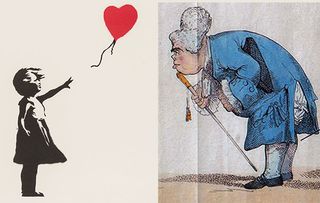
An 18th century Byronic Banksy for sale at the same time as the 21st century equivalent
Art has been used for social commentary for millennia, but it's always fascinating to see how differently it's handled across eras.
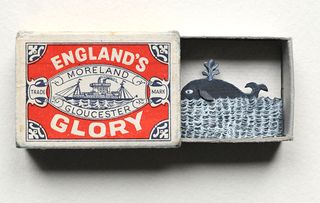
10 hugely talented new artists whose work is beautiful, inspiring and affordable
Sam Gare, Director of the Affordable Art Fair Bristol, picks out ten of the most exciting artists on show at
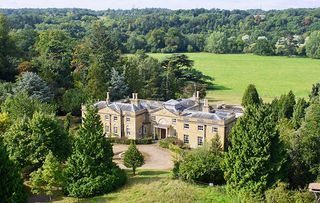
Credit: Coombe Park
A 'faded glory that time forgot' with vast potential on the banks of the Thames
Within easy reach of London, Oxford and Reading lies an impossibly romantic house and estate, Coombe Park – a faded beauty
Country Life is unlike any other magazine: the only glossy weekly on the newsstand and the only magazine that has been guest-edited by HRH The King not once, but twice. It is a celebration of modern rural life and all its diverse joys and pleasures — that was first published in Queen Victoria's Diamond Jubilee year. Our eclectic mixture of witty and informative content — from the most up-to-date property news and commentary and a coveted glimpse inside some of the UK's best houses and gardens, to gardening, the arts and interior design, written by experts in their field — still cannot be found in print or online, anywhere else.
-
 Can't you hear me S.O.S? Our treasured native dog breeds are at risk of extinction
Can't you hear me S.O.S? Our treasured native dog breeds are at risk of extinctionDo you know your Kerry blue terrier from your Lancashire heeler? A simple lack of publicity is often to blame for some of the UK's native dog breeds flying dangerously low under-the-radar.
By Victoria Marston Published
-
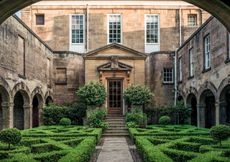 'There are architects and architects, but only one ARCHITECT': Sir Edwin Lutyens and the wartime Chancellor who helped launch his stellar career
'There are architects and architects, but only one ARCHITECT': Sir Edwin Lutyens and the wartime Chancellor who helped launch his stellar careerClive Aslet explores the relationship between Sir Edwin Lutyens and perhaps his most important private client, the politician and financier Reginald McKenna.
By Clive Aslet Published

